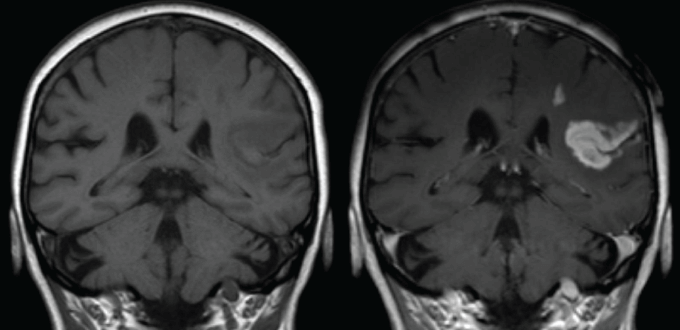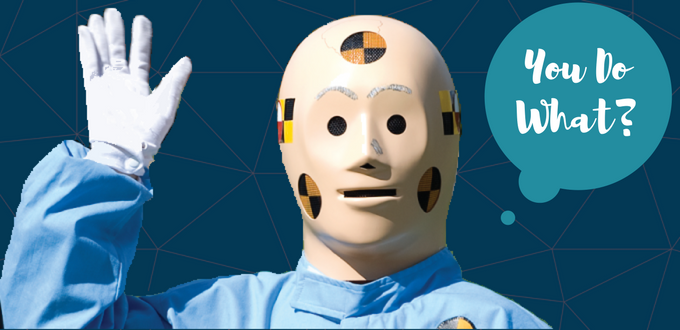It is not uncommon for a biomechanist to hear “I’ve got a pretty strange one for you . . .” from a client, often because an injury is being reported under fairly unusual circumstances. The question on most people’s minds is “Did this injury result from this incident?” The answer to this question takes into consideration whether the injuries pre-existed the incident, whether they were embellished or whether they could have been mitigated or prevented altogether.
When the damages of a claim arise from personal injuries, a qualified biomechanist can determine if there is a causal relationship between the claimed injuries and the reported event. A biomechanist has a unique theoretical and experimental background, which enables the understanding of fundamental engineering principles as it relates to biological tissues of the body, such as bones, ligaments, muscles, and the brain. As a result, a biomechanist is able to understand — and effectively communicate — the mechanisms of injury and the likelihood of them occurring. Simply, a biomechanist is an engineer — or scientist — who studies the human body instead of machines, buildings or bridges. As a result, claims involving expertise in injury biomechanics can be pretty interesting.
When a claim is reported — and the injuries don’t appear to be consistent with the reported circumstances — a biomechanist is able to quantify the likelihood of a resulting injury. Information on how injuries are sustained can be useful in determining the actual damages associated with an incident and how to handle the claim. In the following four cases, all of which involved unique situations of reported head injuries from falling objects, the insurer or claimant benefited from injury biomechanics expertise.
Case Study 1: Damages reduced due to excessive injury claim
A claimant was shopping at a grocery store and when they went to remove items from the top shelf and place them into the grocery cart, several items fell from the shelf hitting them in the head, neck and back. As a result of this incident, a permanent brain injury and soft tissue injuries to the neck and back were reported. Based on the available information and on-site testing, the mass of the items that fell, where they fell from and the potential severity of the various impacts sustained was calculated. A biomechanist was able to determine that the forces actually involved in this incident were drastically less than what would be required to cause the claimed injuries. With that knowledge, the defendant’s exposure to damages was significantly reduced.
Case Study 2: Damages stick due to potential for severe injury
A child was returning to school when a piece of ice fell from the roof of the school and struck the child’s head. A traumatic brain injury was claimed. Several witnesses provided crucial information regarding the incident that helped in assessing the severity of the head impact. With knowledge of the forces required to cause hard and soft tissue injuries to the skull and brain, respectively, it was possible for a biomechanist to conclude that the claimed injuries were consistent with the reported circumstances and were not excessive.
Case Study 3: Client alerted to risk of high damages and to set reserves high
A claimant was in a restaurant when an object falling from a nearby shelf struck them. An expert was retained quickly on the file, prior to the claim being issued, to assess the risk of exposure and appropriate future reserve levels for damages. Based on the incident report, the height of the patron, the weight of the object and its original location before falling, a biomechanist was able to predict a high likelihood of a significant head injury. As a result, the insurer was prepared in advance to set appropriate reserves for the anticipated claim.
Case Study 4: Injuries pre-dated incident and were not aggravated by incident
A claimant was shopping at a department store when a small piece of wood trim fell from the wall, hitting the head and shoulder. A brain and soft tissue injury to the neck were claimed as a result of this incident. On-site testing revealed the dimensions and mass of the wood trim, the distance the wood fell and the speed at which it fell. With that knowledge, the severity of the impact and the resultant head and neck motions were considered. After finding the impact to be minor in nature and well below accepted injury thresholds, the previous injury history of the claimant was considered. It was discovered the claimant had been in several motor vehicle collisions before this incident and had sustained various injuries as a result of those collisions. With details of the pre-existing injuries, a biomechanist was able to assess whether or not the current incident was severe enough to have aggravated those injuries. It was determined the claimed brain and neck injuries pre-existed the incident and were not worsened as a result of the minor impact.
What if the injury is not in dispute?
A claimed injury is not always questioned because sometimes an injury is clearly the result of a particular incident. However, when there is a question as to whether an injury could have been lessened or possibly prevented in an alternate scenario, a qualified biomechanist can be consulted. Knowledge of what could have happened can be very beneficial to the insurer or claimant.
For instance, many claims arise from head injuries when a cyclist who is not wearing a helmet is involved in a collision with motor vehicles. If the presence and causation of the injury are clear, the next question should be: Would a helmet have affected the injury outcome? Based on details of the collision and the sustained injuries, a biomechanist can determine whether or not a helmet would have been effective or ineffective in mitigating the claimant’s injuries.
Biomechanists often supplement reconstructionists in accident reconstruction cases. In cases where vehicle evidence may be less than conclusive, an expert in injury biomechanics can provide additional information as to how the observed injury occurred that may allow a conclusion on restraint use to be reached. Additionally, if it is accepted or determined an occupant was not restrained, the effect proper restraint may have had on mitigating or preventing injuries should be considered. A qualified biomechanist can determine how effective restraint usage may or may not be for occupants of varying sizes and vehicle positions during collisions of varying severity and orientation.
This article was written by Michael Sinnott and was originally published by Claims Canada. Click here to view the original post.


About The Author
Michael Sinnott
My background is in Biomechanics and Engineering. I work in Forensics, so I'm the guy that gets called to figure out what happened and why. I own BioLogic Forensics LLC, and offer forensic services out of Oahu, Hawaii. I love what I do and am passionate about people. Work related or not, I'm always investigating something. Whether I'm working or surfing or diving or fishing, I'm proud to share my stories. After all, I'm just a kid from suburban Detroit living out his dreams in Hawaii!